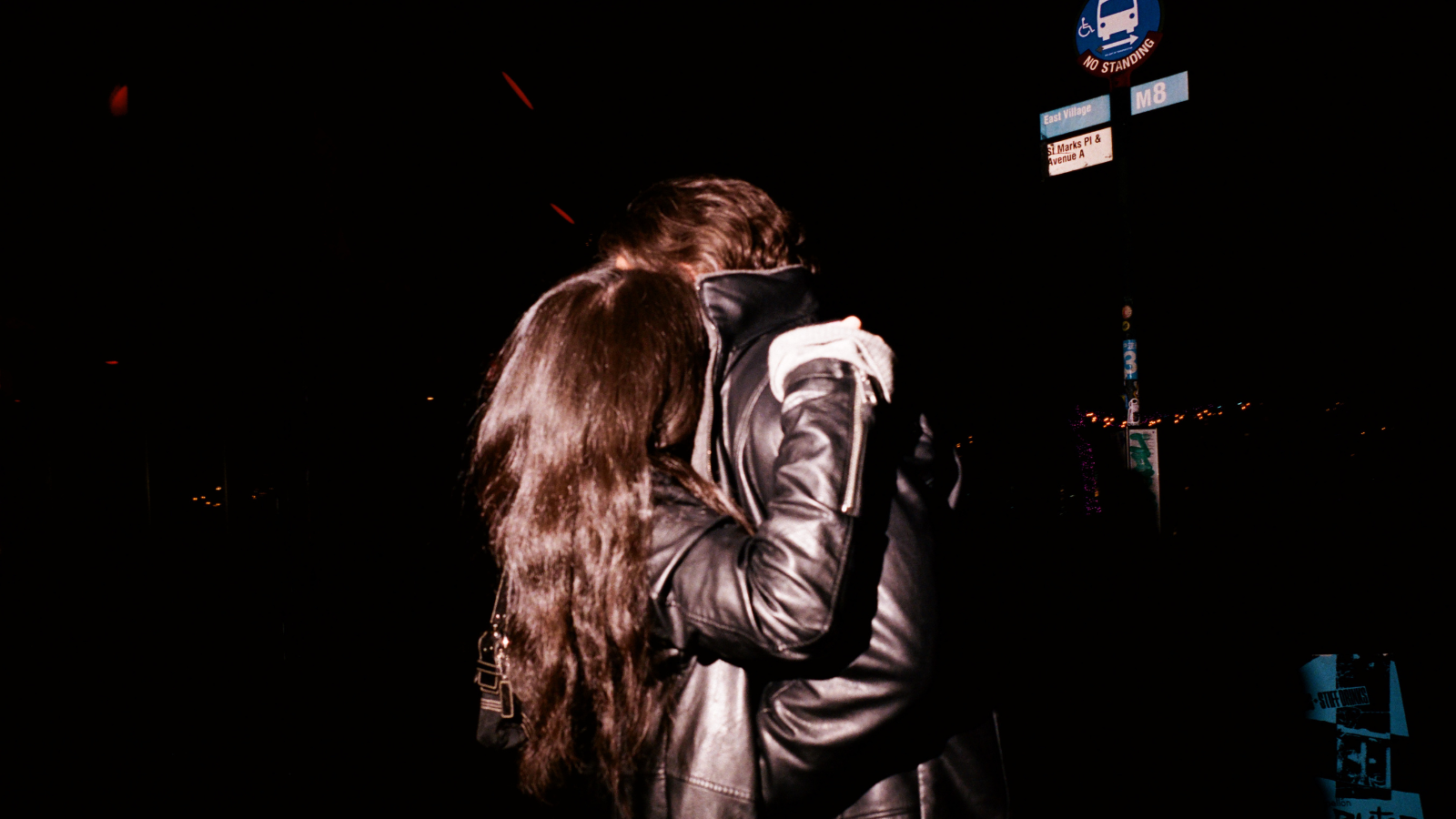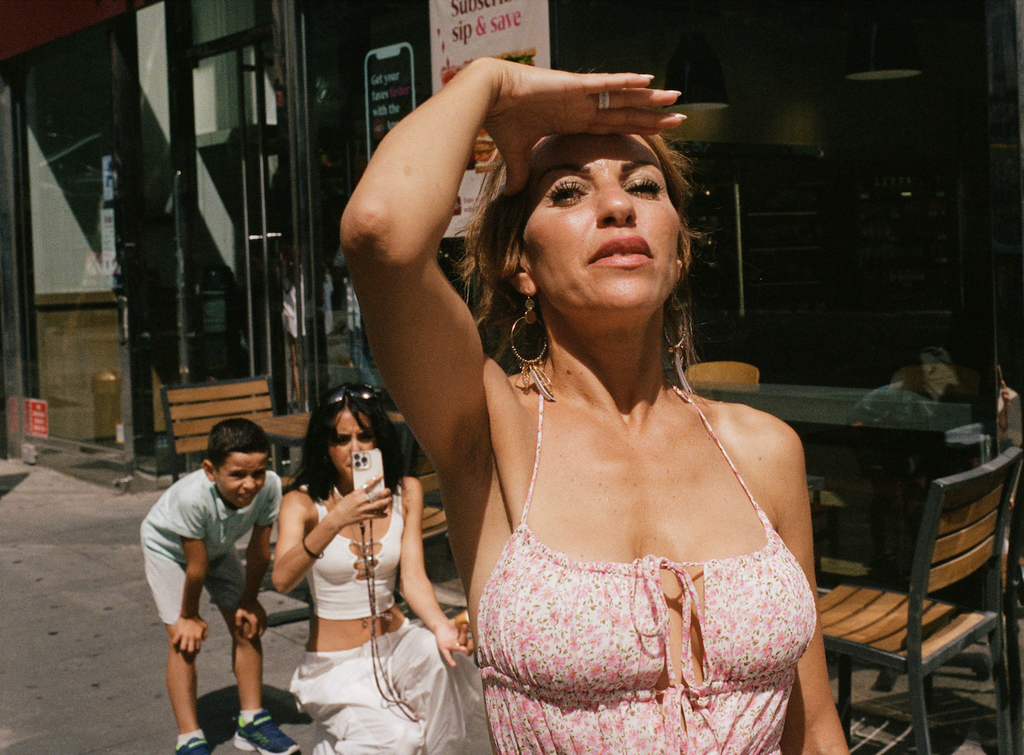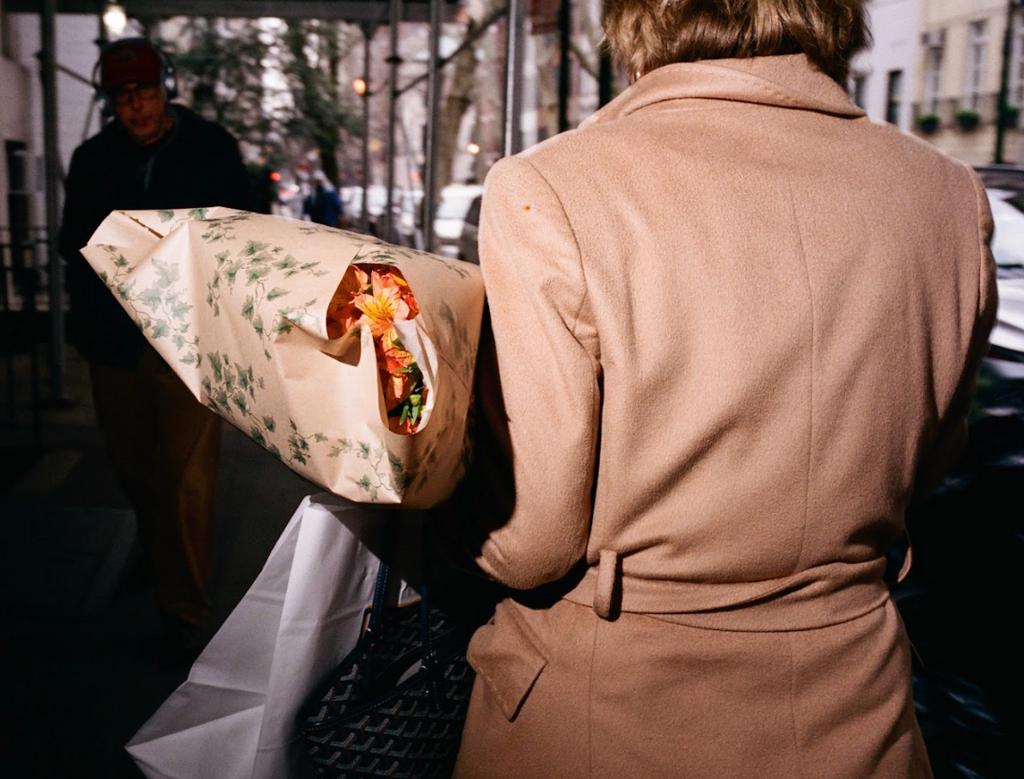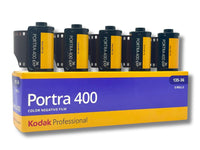Black Friday 2025 has landed at Analogue Wonderland, bringing some of our biggest film photography deals of the year - from discounted film and cameras to money-saving WonderLab processing offers, exclusive bundles, and festive specials available for a limited time only. Grab a great deal while stocks last!
Recent posts
Shop the article

The Film Photographer's Guide to New York City: 5 Must-Know Tips
If you’re visiting New York for travel, the sudden explosion of visual stimuli and cacophony of sounds can be intimidating, I know it was for me when I first arrived. Coming from a slow moving place where street photography was mostly documenting well manicured lawns, vintage cars, and golden light falling onto regional architecture, the screaming, ever changing streets of the city were a lesson in adaptability.
If you’re coming to New York and want to make the most of your time here, whether it be a day, a week, or a month, it’s important to be intentional about what you shoot and push past your comfort zone to create some amazing pictures. Here are 5 tips I have, from both my experience shooting street in New York and also being a part of a lab, Nice Film Club where I’ve scanned thousands of street shots from tourists and locals alike.
Tip 1: Tread carefully with tourist traps
When you’re new to a city and especially eager for things to photograph, you often gravitate towards extremely popular locations. When you google “best photo spots NYC” places like Times Square, Central Park and the Brooklyn Bridge are sure to pop up. Let me give you my quick rundown of popular tourist spots in New York and whether they are a hit or a skip specifically for street photography.

The best photo sites aren't always the most obvious ones! Lower East Side in Manhattan, shot on Kodak Portra 800 35mm film
The Brooklyn Bridge: I think the Brooklyn Bridge is an enjoyable walk and a great spectacle. If you’re interested in capturing the architecture of this monument I’d say it’s worth a trip. The bridge gives you an opportunity for architecture photography, to encounter subjects walking across the bridge, and is just a pleasant place to spend your time
Central Park: Central Park is an amazing place to take photos. The park is so expansive and full of New Yorkers enjoying the splendour of the outdoors. I think Central Park provides a little bit for everyone. It has stunning lakes, trees, wildlife, and really brings to life the eclecticism of New York. If you’re interested in taking portraits of strangers in your street photography practice, Central Park is a good place to start. I find that when people are relaxing, surrounded by nature and immersed in their favourite book they are much more receptive to having their photo taken. They don’t feel the pressure of being stopped on their way to work and seem to be less suspicious of why you’d want to take their photo - especially when holding a film camera. Subjects feel more at ease because they can sense your photo is not only capturing their likeness, but also the beauty of the park.

A new perspective and an intriguing park scene. Shot on Kodak Portra 400 on Contax G2 film camera.
Dumbo: Avoid, avoid, avoid. The Dumbo photo spot, as it’s been coined, is an image that I’m sure many are familiar with. The cobblestone street with a view of the Manhattan bridge is as popular as seeing the Mona Lisa. Tourists travel from everywhere to get this exact same photo and in my opinion it’s a spot that you should just stay away from. Besides this spot, Dumbo has a pretty view of the water but is largely filled out with high end retail/specialty shops, and breweries. Dumbo might not be the best place to get unique street photos.
Times Square: As a person who lives in New York I’m obligated to say avoid at all costs but I actually think Times Square is a great place to practice street photography. If you’re someone who is nervous to photograph strangers without asking them first, or is having issues getting close enough to subjects, Time Square can help you build those muscles. There are so many people, so much commotion, and so many pictures being taken it’s easy to blend right in.
Tip 2: Get out of your head and take the shot!
One of the things people seem to struggle with in street photography is a moral quandary around shooting people without asking first. You are free to follow your own ethical code but remember street photography was built on the notion that we all share public spaces and are free to interact inside those spaces in our own ways, including taking photos of strangers. The people of New York are the entire essence of the city, so if you want to capture the city’s feel as a visitor, you have to interact with its people. It’s easy to psych yourself out or imagine all the bad possibilities that could happen if you take a street photo.

Someone watching someone taking a photo of someone taking a photo of someone 🧐
However, New York is a perfect place to let all those trepidations go and challenge yourself to take a photo outside your comfort zone. If this kind of photography really isn’t your wheelhouse, that’s okay you don't need to shy away from interacting with the people you photograph. Approaching a stranger with a simple smile or conversation can lead to more meaningful portraits and stories. New Yorkers are known for their straightforwardness and don’t like to have their time wasted. Be clear, direct, and kind if you want to take a photo and you have nothing to worry about.
Tip 3: Use light and seasonality to your advantage
Light and seasonality are two things that will drastically affect mood in your street photos. The city transforms and changes shape with the seasons both in its landscape and in what people wear. Spring is a fantastic time for film photography: it breathes new life into the city as cherry blossoms, tulips, and other flowers bloom across parks and streets, injecting colour and vitality into your shots. The soft, diffused light of spring creates gentle shadows, ideal for portraits and detailed shots of daily life.
Summer in New York is characterised by its vibrant energy, longer days, and dynamic street scenes. The harsher light and deeper shadows can be used to create striking contrasts and dramatic compositions. This is the season of street festivals, open-air markets, and outdoor concerts.

A different take on the 'flowers on film' shot!
Fall offers a palette of warm colours as the foliage changes in the city's parks, providing a stunning backdrop for street and landscape photography. The softer light and cooler temperatures bring a different mood to the city, one of transition and reflection.
Winter transforms New York into a city built for monochrome, with snow and ice adding a minimalist aesthetic to your photographs. The challenges of winter light—shorter days and often overcast skies—can be turned into an advantage by focusing on the interplay of light and shadow in the snow.
Keep in mind peak times to take photos to really bring out these seasonal details. The quality of light during the golden hour (shortly after sunrise or before sunset) and the blue hour (the period of twilight each morning and evening where the sun is below the horizon) in NYC can add a magical quality to your street shots. These times offer soft, diffused light and stunning skies that can dramatically enhance the mood in your subject matter.
Tip 4: Look for stories in small details
When you’re visiting New York the vastness can be overwhelming. Remember that sometimes, the most compelling stories are told not through sweeping cityscapes but through the small, often overlooked details. This could be the texture of peeling paint on an old door, the patterns of shadows cast by passers by, or something that pops out at you completely unexpected.
New York City is a place of contrasts, where the old meets the new, nature intersects with urbanity, and cultures from around the world converge. Capturing these juxtapositions can create visually striking images that also offer commentary on the city's dynamic character or tell politicised stories of change and gentrification. Look for moments where two things clash. New York is full of ironies if you can spot them.

Is that... a knife?!
Finally remember that simple objects have the power to convey deep emotional resonance the same way people can. Find a way to photograph an inanimate object so that it carries a connotation beyond its utilitarian function. A great way to do this is to remove context from a photo and leave people wondering how and why something got to where it is.
Tip 5: Develop locally
Traveling with film can be highly stressful so I recommend getting your film developed and scanned while you are in New York. And you probably won't be surprised to say that I recommend Nice Film Club!!
Here at NFC we position ourselves as the premier mail-in/drop off film developing and scanning service tailored for film photographers. Nice offers a streamlined process for film development and scanning, employing custom re-purposed Noritsu V50 roller transfer processors for both black and white and colour (C-41) film. This method prioritises consistency and quality, reducing the risks of markings or scratches on the film that could occur with other development methods.

Our commitment to quality extends to the scanning process, where we use Noritsu HS1800 scanners to ensure high-resolution outputs for all film types, including 35mm and various medium formats. The detailed process includes careful calibration and cleaning of equipment, precise adjustments during scanning to reflect the original film stock accurately, and meticulous editing to correct any dust or orientation issues.
Nice Film Club also takes a thoughtful approach to editing, aiming to preserve the photographer's intent without making extensive changes. Our philosophy ensures that the final images remain true to the original shots while meeting the lab's quality standards. The lab provides archival services, organising completed scans and negatives for easy access and retrieval while you visit.
Membership and pricing details are designed to accommodate different levels of need and engagement with the service, including benefits like high-resolution TIFF scans, rush development options, and discounts on film and other products for members. Our services are accessible through a modern web platform, simplifying the submission and management of film development orders. So before you jet back to the UK please drop by and see for yourself.
And if you don't quite manage that then let Analogue Wonderland develop your films, and share the results with us - we'd love to see your photos of our home!
Conclusion: Shooting Film in New York
Navigating New York's vibrant streets through the lens of a film camera offers a unique window into the city's vitality. For those visiting and aiming to capture its essence, the contrast from quieter, slower-paced environments can be stark, necessitating a swift adaptability to its rhythm.

Shot on Kodak Tri-X 35mm film and Contax G2 film camera
Key to making the most out of a New York photography excursion is intentionality in what you capture and pushing boundaries beyond your comfort zone for truly remarkable images. Remember that NYC provides something different for everyone so take what’s helpful from this list and leave the rest behind to make pictures that make sense for you.
Written by:
Gabe Ginsburg from Nice Film Club in Brooklyn, NY
Ready to dive in?
Keep Reading
View all
Christmas 2025: Shipping & Opening Hours
Christmas 2025 is fast approaching! To make sure your analogue goodies arrive in time, take note of our last shipping dates, plus opening and operating hours over the festive season. We've got everything you need to gift the magic of film photography this Christmas!

Film Photography Christmas Gift Guide 2025: Analogue Wonderland
Capture the magic of Christmas with film - no filters needed. Our 2025 Film Photography Christmas Gift Guide 2025 is packed with thoughtful presents for every type of shooter, from curious beginners to seasoned photographers. Discover film stocks, cameras, and creative accessories that will make this festive season truly memorable.
Subscribe to our newsletter 💌
Sign up for our newsletter to stay up to date on film photography news, sales and events:
Free Tracked Shipping
On all UK orders over £50
Passion For Film
An unbeatable range and an on-site lab
Our Customers Trust Us
Thousands of independent 5* reviews
All Deliveries are Carbon Neutral
Independently audited and verified by Planet
- Opens in a new window.








1 Comment -
John •
Whilst I appreciated the blog.
Why should people avoid taking the lovely shot down on Washington street. (DUMBO)
I shot it years ago and recently my wife loved her developed images from it. They were hers and hers alone and it really made her day when I had one added to a book I got made for her.
Down at water street right to the side of the bridge affords great architectural ideas as well.
If it brings a person happiness it should be encouraged.
If you want to shoot on the Brooklyn bridge for shots looking across either way.
Go early in the morning or on public holidays.
Long exposure one on the boards is hard due to the vibrations, however if you stick to the concrete it’s doable 😉
I would add in the flat iron is one of the best things to photograph and pop up onto the high line for some amazing views up 10th
Absolutely agreeing that one should try to avoid Times Square, or at least keep your hands on your gear…
Ride the subway out to Coney Island
Or just ride the subway, many great stations to take photos of.
Whilst not a local I have visited so many times I sometimes feel like one 😉
John